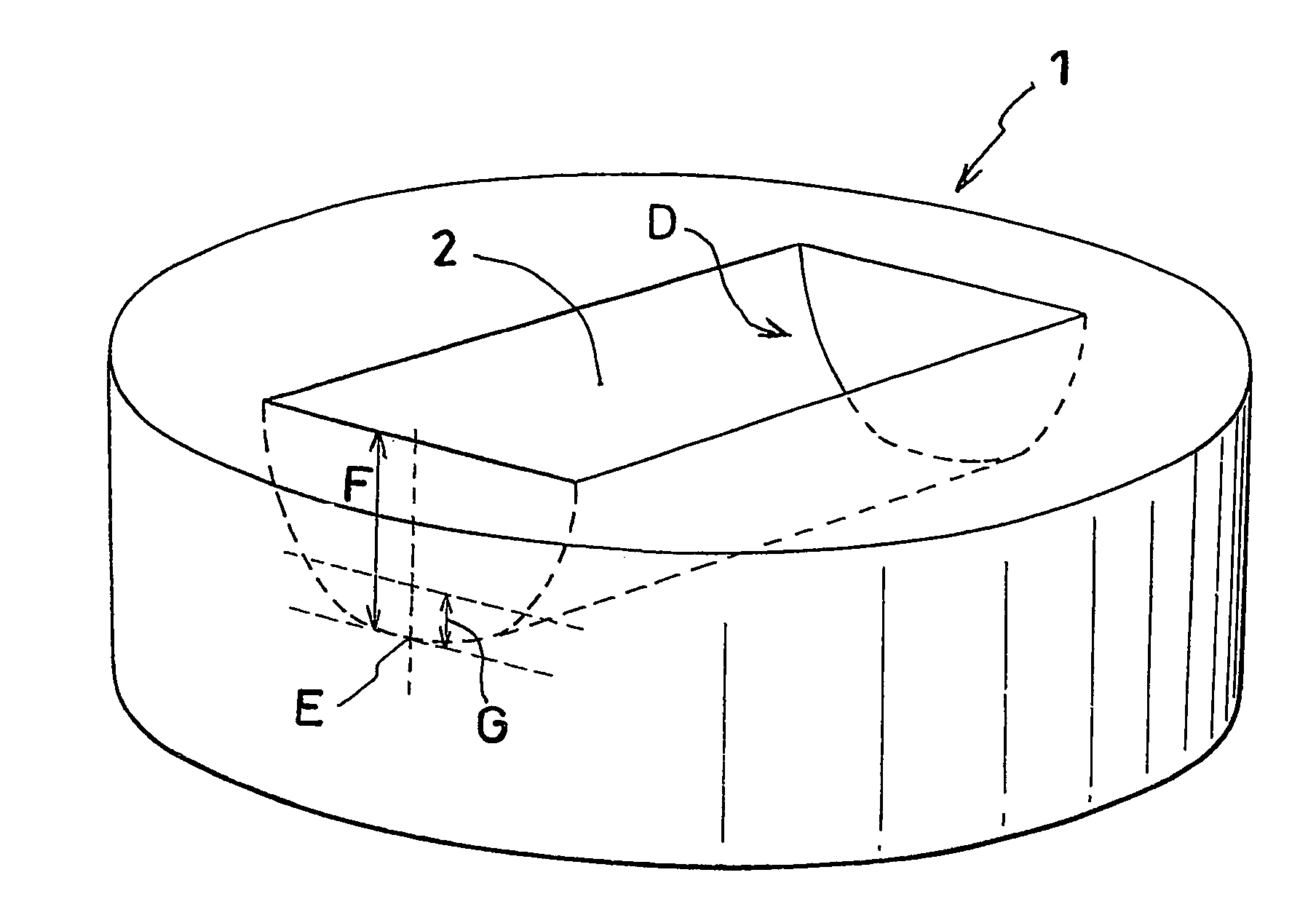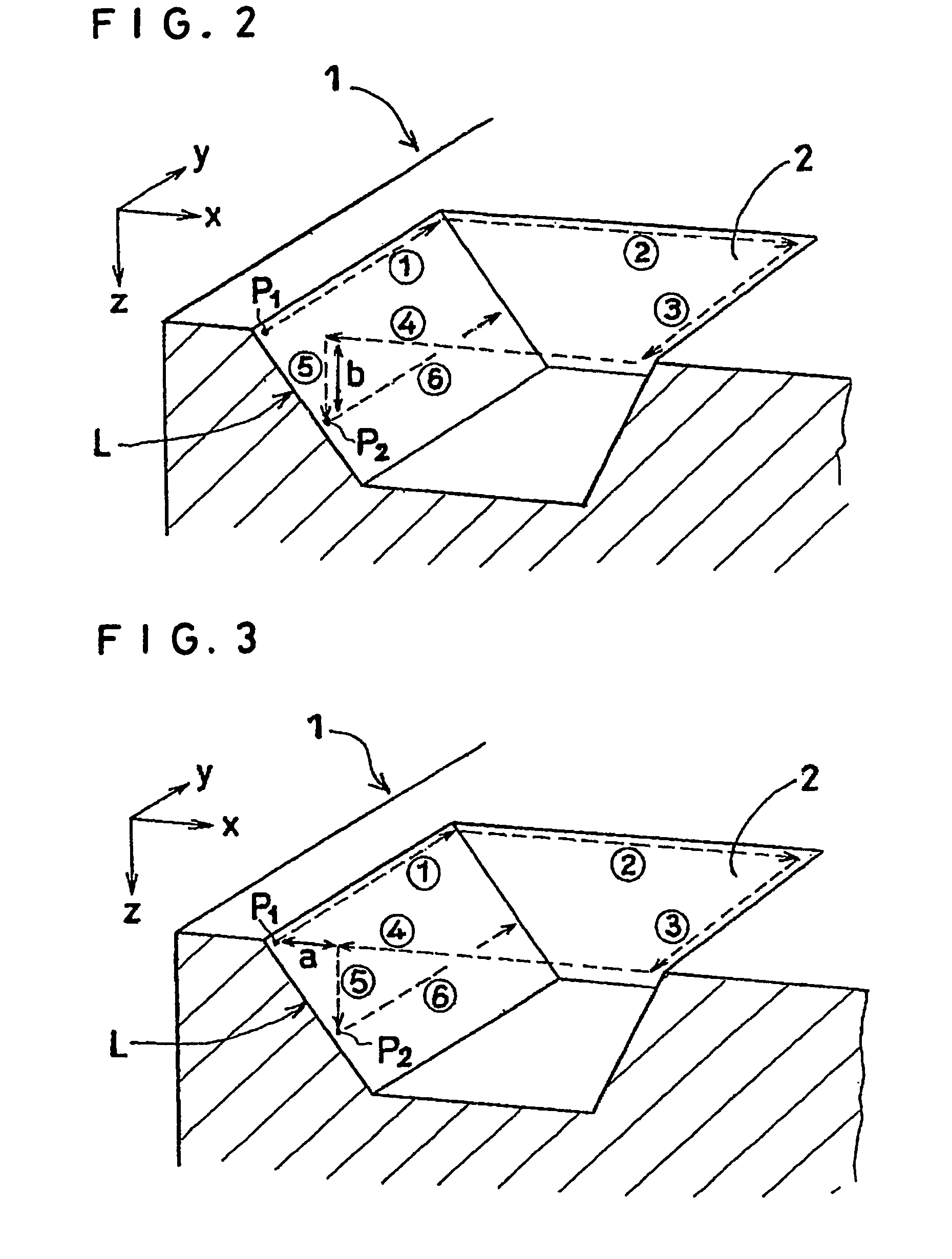Method for producing forging die, forging die and forged article
a technology of forging dies and forged objects, applied in the direction of manufacturing tools, cutting tools, forging/hammering/pressing machines, etc., can solve the problems of increasing tool replacement frequency, affecting productivity, and unable to realize highly efficient processing, so as to ensure tool life, ensure high-speed cutting, and achieve easy determination of optimal working conditions
- Summary
- Abstract
- Description
- Claims
- Application Information
AI Technical Summary
Benefits of technology
Problems solved by technology
Method used
Image
Examples
examples
[0098]The present invention will next be described in detail by way of examples, which should not be construed as limiting the invention thereto.
[0099]The die material employed is SKD 61 having HRC hardness of 48±2. The tool employed is a ball end mill of R0.5 to R2. The surface coating is CrSiN. Other conditions are shown in Tables 1 and 2.
[0100]The surface finish conditions after the material underwent cutting were observed under a magnifying lens and evaluated. The results of evaluation are shown in Table 1. Table 2 shows results of comparison between a conventional method and the present invention.
[0101]
TABLE 1TOOLLENGTH OF TOOLROTATIONFEEDRADIUSEXTENSION(A)(B)(B / A)2 ×SURFACE ROUGHNESSSAMPLE NO.(R) (mm)(L) (mm)L / 2R(rpm)(mm / MIN)(B / A)(L / 2R)CONDITIONSCOMP. EX. 12153.752000036000.1800.122xINSERTION MARKSEX. 12153.752000020000.1000.038∘EX. 22153.752000012000.0600.014∘COMP. EX. 22153.75200009000.0450.008xSCRATCH MARKSCOMP. EX. 32153.75200007000.0350.005xSCRATCH MARKSCOMP. EX. 42153.75...
PUM
| Property | Measurement | Unit |
|---|---|---|
| surface roughness Rmax | aaaaa | aaaaa |
| angle | aaaaa | aaaaa |
| tool radius | aaaaa | aaaaa |
Abstract
Description
Claims
Application Information
 Login to View More
Login to View More - R&D
- Intellectual Property
- Life Sciences
- Materials
- Tech Scout
- Unparalleled Data Quality
- Higher Quality Content
- 60% Fewer Hallucinations
Browse by: Latest US Patents, China's latest patents, Technical Efficacy Thesaurus, Application Domain, Technology Topic, Popular Technical Reports.
© 2025 PatSnap. All rights reserved.Legal|Privacy policy|Modern Slavery Act Transparency Statement|Sitemap|About US| Contact US: help@patsnap.com



